- Home
- Elizabeth Gaskell
Wives and Daughters Page 2
Wives and Daughters Read online
Page 2
INTRODUCTIONThe book is very long and of an interest so quiet that not a few of its readers will be sure to vote it dull. In the early portion especially the details are so numerous and so minute that even a very well-disposed reader will be tempted to lay down the book and ask himself of what possible concern to him are the clean frocks and the French lessons of little Molly Gibson. But if he will have patience awhile he will see. As an end these modest domestic facts are indeed valueless; but as a means to what the author would probably have called a “realization” of her central idea, i.e., Molly Gibson, a product, to a certain extent, of clean frocks and French lessons, they hold an eminently respectable place. As he gets on in the story he is thankful for them. They have educated him to a proper degree of interest in the heroine. He feels that he knows her the better and loves her the more for a certain acquaintance with the minutiœ of her homely bourgeois life.-HENRY JAMES
The novelist Henry James, in his review of Wives and Daughters (1866) written in the wake of Elizabeth Gaskell’s death, praises Gaskell’s “genius” and pronounces that the novel is “one of the very best novels of its kind” (“Elizabeth Cleghorn Gaskell,” pp. 1019-1020; see “For Further Reading”). In the review, quoted above, James mingles praise with warnings to his imaginary readers that they might at first find the book dull, but that which was dull would soon enough prove to be the foundation of a strong investment in—even love for—the novel’s heroine. James’s mingled but nevertheless high praise seems to have emerged from his belief that although Gaskell’s novels displayed “a minimum of head,” describing her writing style this way was a compliment to Gaskell’s “personal character,” rather than an indictment of her “intellect.” Whether one chooses on Gaskell’s behalf to be affronted or flattered by James’s review is less important, I would suggest, than parsing the review to better understand how Victorian novels known to be written by women were received by their readers. One thing we learn from James’s review is that the register for praise (and not just criticism) is related to gender. Even though James thinks highly of Wives and Daughters, he cannot forget that it is written by a woman, and would likely not think to try—which may not so much detract from his reading of the novel as condition his reading of the novel. And so with James’s emphasis on Gaskell’s facility with “domestic facts,” her adeptness with “minutiae,” and her evocation of a reader’s feelings rather than the promotion of understanding, each skill that is singled out is in some sense a stereotype of women’s interests and talents. The praise, that is, emphasizes the author’s femininity. James mentions the “gentle skill” Gaskell uses to slowly involve the reader “in the tissue of the story,” her “lightness of touch,” and the “delicacy of the handwork” she uses to perfect the “net” that ultimately entangles the reader in the novel.
James’s review may emphasize that the author is female, but, unlike our own contemporary obsession with the target demographics for various art forms—“chick-lit” and “chick-flicks,” to name two current monikers—it does not assume or even believe that the audience of the novel is necessarily female. If anything, James projects a male reader, one who will feel what he calls an “almost fraternal relation” to the heroine Molly Gibson. Elizabeth Gaskell was, as Henry James allows, a “lady-novelist,” but one who excites every “reader’s very warmest admiration.” Our contemporary concern for deemphasizing an author’s gender when evaluating art, while often simultaneously emphasizing who is meant to consume it, was not shared by the mid-Victorians. James’s review reflects this, as does the considerable attention Gaskell gave to what we now call the “packaging” of her first novel. Like her good friend Charlotte Brontë, Elizabeth Gaskell had sought a male pseudonym to use for her first novel, Mary Barton:ATale of Manchester Life (1848), even though her publisher had suggested that the novel would be more popular if it was known to be the work of “a lady” (Uglow, Elizabeth Gaskell: A Habit of Stories, p. 183). The account that Jenny Uglow, one of Gaskell’s biog raphers, gives of the publishing process suggests that Gaskell was invested in the commercial presentation of the novel; Uglow speculates that Gaskell “may have felt that a man’s name (like the proposed title, “John Barton”) would make the readers take the politics of the book more seriously.” Gaskell agonized about the choice of the male pseudonym until she chose—too late—the name “Stephen Berwick” (Uglow, pp. 187—188). In the end, Mary Barton was published anonymously, but, having caused considerable controversy, the identity of its author was soon known and celebrated. Henceforth, Elizabeth Gaskell would publish her novels, if not quite in her own name, under her married appellation of “Mrs. Gaskell.”
To read Wives and Daughters today is to forget perhaps the extraordinary opportunity that writing fiction presented to Victorian women. The book trade during the period was a profoundly commercial enterprise. And unlike in earlier periods, the arts were divorced from either university ties or elite patronage, which particularly benefited women writers. Writing literature was one of the very few professional pursuits open to women in Victorian society. Elizabeth Gaskell was connected to a broad literary community of women, many of whom were her friends and some of whom she actively promoted with her own connections. This circle, which included Charlotte Brontë, Geraldine Jewsbury, Harriet Martineau, Anna Jameson, Harriet Beecher Stowe, Elizabeth Barrett Browning, and Caroline Clive, reads like a list of the most popular and important female literary figures of the day. And yet it would be a mistake to assume that a novel such as Wives and Daughters is solely the province of the female reader. Our contemporary perspective might look to the title Wives and Daughters and think the book is directed to the female reader, even though the title was most likely influenced by Russian novelist Ivan Turgenev’s Fathers and Sons (1862). The conventional assumption about novels, and romance plots and domestic narratives in particular, is that women make up their primary audience; indeed, the stereotype of the woman who reads too many novels, and becomes sick from “gorging” on too many delicious reads, originated in the eighteenth century and circulated widely in the Victorian period. And yet a host of descriptions, anecdotal evidence, figures from circulating libraries, and surveys about book ownership and reading habits suggest that men were as avid novel readers as women. And indeed what, exactly, in the novel marks it out for the female reader? As will become apparent as you read the novel and the following discussion, the work of Elizabeth Gaskell cannot be slotted into contemporary demographic readerships, but rather is inviting— as Henry James himself said—to anyone interested in an “ ‘everyday story’ ... in an everyday style.”
It is important to understand that the novel—as a distinct art form or literary genre—has not always been with us. Moreover, in some sense, it required the emergence of a middle-class society: one in which there was enough leisure time to read, privacy in which to do it, literacy to enable it, and enough money to purchase or borrow books. The literary critic Ian Watt, in his well-known book The Rise of the Novel, articulated the emergence of the novel, specifically his concept of “formal realism,” within the historical context of the early eighteenth century and as arising from the following conditions: the rise of the middle class, the growth of commercial capitalism, the eclipse of strict feudal and aristocratic relationships, and (more broadly and theoretically) the emergence of “individualism” as a value stemming from the Protestant Reformation. We know that the audience for novels grew considerably in the Victorian period. This was due to a number of factors, including cheaper production costs. (That the novels became cheaper to possess is related to the consumption of them as works of art, for just as reading a novel is scaled to one person, the capability of infinite reproduction of that artwork through cheap editions makes any one copy worthless.) Other factors contributed to the growth of the audience for novels, including the increase in literacy, although the extent of literacy in the Victorian period is hard to quantify with certitude. The growth of cities with their more concentrated markets, the expand
ed markets in the colonies, and the proliferation of circulating libraries were also significant factors. The circulating library, which lent books for an annual membership fee, was a common means by which Victorian readers obtained novels, for it was not until the 1890s that free public libraries became common and the institution of the circulating library collapsed. Cheap versions of fictional works were not as readily available as has been popularly imagined; reproductions of classics, abridgments, and penny popular fiction were available, but more serious fiction (including Dickens, Thackeray, Gaskell, Eliot, and Trollope) was not reprinted in cheap form for some time after the first printing—from one to three or even five years.
Novels, however, did not necessarily first appear as volumes, but were often first printed as serials. That is, installments of the novels—known as “numbers”—would come out in a magazine or journal. Wives and Daughters first appeared this way in the Cornhill Magazine, a respected monthly aimed at the educated middle and upper-middle classes. Charles Dickens, a publisher as well as an author, first brought out many of his novels—including Great Expectations (1861) and A Tale of Two Cities (1859)—in monthly installments in his magazines Household Words and All the Year Round. Dickens in fact published Elizabeth Gaskell. A great number of magazines other than the two Dickens edited brought out fiction in “part” form, and while the practice lasted (it had died out by the 1880s), it was often a lucrative device for authors and publishers alike. However, publishing in serial form, as might be surmised, did put certain constraints and demands on authors. Gaskell, whose professional relationship with Dickens lasted some thirteen years, is said to have chafed at some of the demands put on her by Dickens as editor. Gaskell, as the volume you are holding might suggest, is not known for being economical with words, and indeed this was a source of contention between Dickens and Gaskell; money did not enter into their disagreements, as Dickens was generous with his authors. As an editor Dickens sometimes asked Gaskell to alter conclusions and strongly encouraged her to end installments on important moments in the flow of the story, or even on cliffhangers—requests to which she would only occasionally comply. Gaskell would go on to publish in other journals, including Fraser’s Magazine, Harper’s Magazine, and the Cornhill. She was a popular author in the United States as well; she published her novels in American periodicals such as Harper’s New Monthly Magazine and The Atlantic Monthly beginning in 1849. Gaskell’s most important editor after Dickens was a George Smith, who together with William Thackeray edited the Cornhill, a journal that also published such Victorian luminaries as George Eliot, John Ruskin, and Matthew Arnold. Wives and Daughters first appeared in the Cornhill over the course of eighteen months; the first installment came out in August 1864, and the final monthly installment appeared in January 1866, several months after Gaskell’s death. Each installment was equal to approximately three chapters. If you were to look at the original serials of the Cornhill, you would see that Wives and Daughters appeared alongside novels by Anthony Trollope (The Small House at Allington) and Wilkie Collins (Armadale) .
The novel was not finished when the Cornhill began publishing its monthly installments; in fact, even though Gaskell stayed months ahead of the publication schedule, she had not finished the novel by the late fall of 1865, when she suffered a sudden death. As her biographer Jenny Uglow details, Gaskell was much occupied by the outfitting of a country house in Hampshire that she had secretly purchased as a surprise for her husband. Intended as a house to retire to, Gaskell purchased the house with proceeds from her writing and with a loan from George Smith in anticipation of the success of Wives and Daughters. She died suddenly in the house in November 1865, her husband not yet aware of its existence and—for our purposes, most importantly—with the novel not quite finished. The novel is nevertheless substantially complete. You will find when you come to the end of your reading of this novel a letter from Frederick Greenwood, who was the editor of the Cornhill when Wives and Daughters was being serialized. It is the same letter that appeared in the Cornhill in January of 1866 in lieu of the final installment. In the letter Greenwood explains that the reader will already, in many senses, know what Gaskell had envisioned as the various fates of her characters. There is a marriage that is forecasted in the final chapter, and indeed no close or immersed reader of Wives and Daughters can have any doubt about its primary characters’ fates. Nonetheless, the reader does not get to see that conclusion unfold in Gaskell’s by-now-familiar narrative style; it is rather told to us by the editor. This is not disastrous, for the story does not feel incomplete, but the loss of the final chapters for the reader who has entered the world of the novel is indeed a felt loss.
Gaskell was in her mid-thirties when she first became a novelist. Although she had written various small sketches and fictional experiments, she did not begin the writing of a novel in earnest until late 1845, when she was prostrate with grief and depression from the death of her infant son William from scarlet fever. Her husband, a prominent Unitarian minister who was himself the author of various tracts, hymns, and a volume of temperance poetry, encouraged her to start the novel as a way to distract herself from her sorrow. Like many Victorians, Gaskell had a life punctuated with the effects of premature death. She herself lost her mother at the age of one. Born Elizabeth Cleghorn Stevenson on September 29, 1810, she was the eighth child of William Stevenson and his wife, Elizabeth. Although born in London, after her mother’s death in 1811 she was sent to be raised by her mother’s sister in Knutsfbrd—a small town in Cheshire that would become the model for Cranford (in her much-appreciated novel, Cranford) and Hollingford in Wives and Daughters. After her father’s death when she was nineteen, Elizabeth traveled widely in England, and in 1832 she married William Gaskell, whom she had met in Manchester, and settled there to the life of a Unitarian minister’s wife. This was not as restricting as it might sound, as Unitarians were deeply committed to various social and political causes, and as the wife of a Dissenting minister she would have been at the center of a lively and engaged community. Likewise, the Unitarian conception of marriage was understood less as a hierarchy and more of a partnership. Unitarians also believed strongly in the education of women, so it is not surprising that many of the period’s female intellectuals, including Gaskell, came from this background. Nevertheless, Gaskell’s early married life was consumed with the traditional duties of childbearing and child care. Between 1833 and 1846 she had six pregnancies, one of which resulted in a stillborn daughter; the other five produced her four girls—Marianne, Margaret Emily (“Meta”), Florence, and Julia—and the one son, William, who died in infancy.
Gaskell saw firsthand the experiences of the poor in Manchester, one of the new, booming industrial cities of the North that epitomized the new social conditions and class conflicts brought by industrialization. She always chose to live at the physical fringes of Manchester, for she was a somewhat unwilling denizen of the city, having grown up among the rural landscapes of Cheshire. From Gaskell’s observations of the Manchester poor emerged Mary Barton, one of an array of novels written in the 1830s and 1840s that brought to the attention of the greater public the terrible living and working conditions of the working classes. These “condition of England” novels contributed to the broad attempt to document the problems of industrial poverty under laissez-faire capitalism, to effect social change. Parallel attempts included early sociological enterprises such as Friedrich Engels’s The Condition of the Working Class in England (published in German in 1845; first English translation 1887) and Henry Mayhew’s London Labour and the London Poor (1851, 1861-1862). Gaskell, as well as novelists such as Dickens, Benjamin Disraeli, Rev. Charles Kingsley, and Charlotte Brontë, contributed in immeasurable ways to the reform agendas of mid-century England. What have been called Gaskell’s social-problem fictions-Mary Barton and North and South (1855)—participated in the great era of agitation for reform in England. Unlike a number of countries on the European continent—such as France, Germany, and It
aly, which reeled from outright revolution in 1848 and 1849—England for the most part kept the peace, despite the country’s considerable economic depression during what came to be known as the “Hungry Forties.” While the country experienced numerous incidents of localized violence, including riots and machine-burning, no large-scale revolutionary movement emerged in England.

 Lizzie Leigh
Lizzie Leigh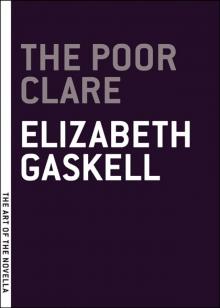 The Poor Clare
The Poor Clare Lois the Witch
Lois the Witch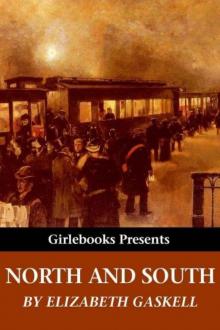 North and South
North and South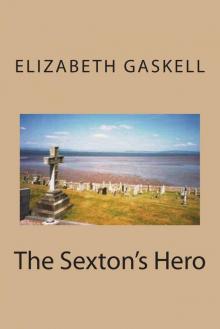 Sexton's Hero
Sexton's Hero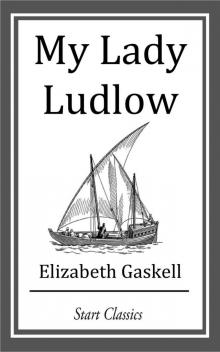 My Lady Ludlow
My Lady Ludlow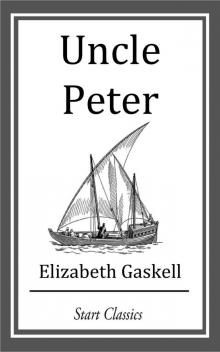 Uncle Peter
Uncle Peter Sylvia's Lovers Elizabeth Cleghorn Gaskell
Sylvia's Lovers Elizabeth Cleghorn Gaskell Delphi Complete Works of Elizabeth Gaskell
Delphi Complete Works of Elizabeth Gaskell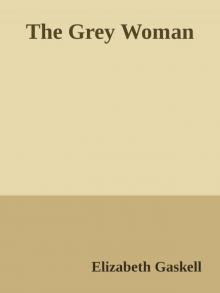 The Grey Woman
The Grey Woman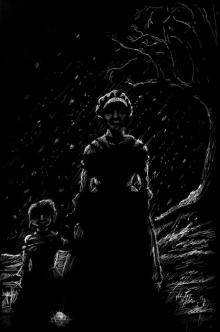 The Old Nurse's Story and Other Tales
The Old Nurse's Story and Other Tales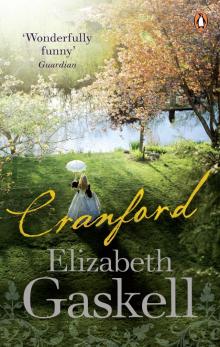 Cranford
Cranford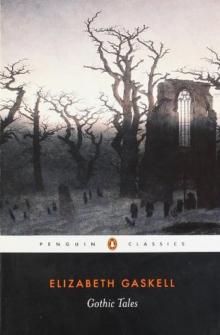 Gothic Tales
Gothic Tales Some Passages From the History of the Chomley Family
Some Passages From the History of the Chomley Family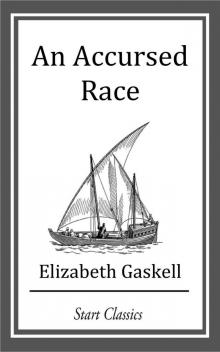 An Accursed Race
An Accursed Race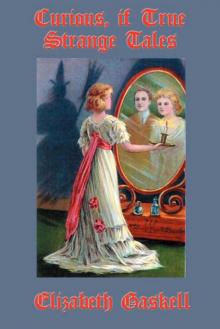 Curious, if True: Strange Tales Elizabeth Cleghorn Gaskell
Curious, if True: Strange Tales Elizabeth Cleghorn Gaskell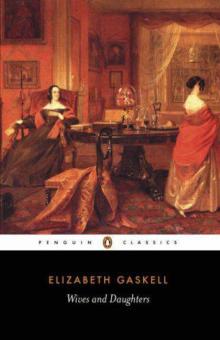 Wives and Daughters
Wives and Daughters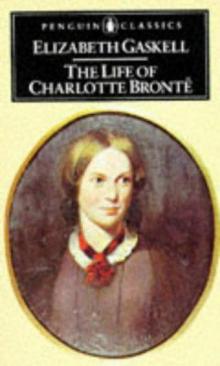 The life of Charlotte Brontë
The life of Charlotte Brontë